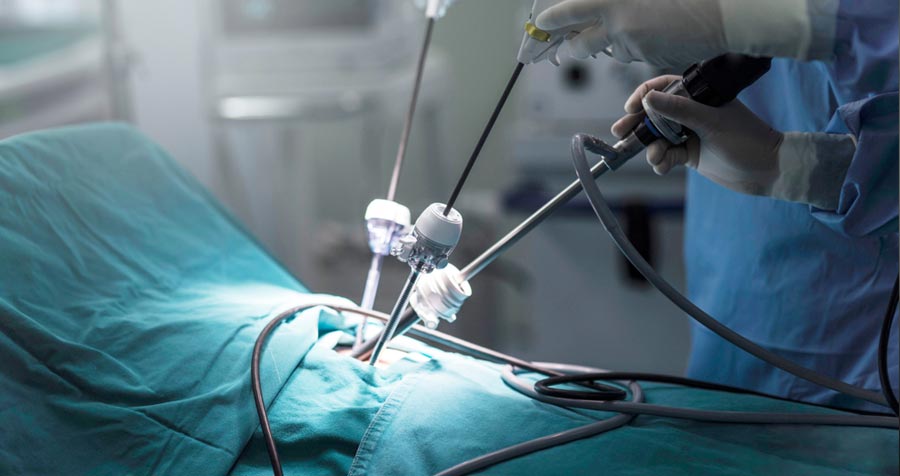
Laparoscopic Surgery: Why, How, When is it done?
Laparoscopic Surgery or Laparoscopy, also called Keyhole Surgery is the most popular clinical technique now used for diagnosis and treating abdominal issues. Laparoscopic Surgery is one of the most common surgeries in the field of IVF and is used by fertility specialists.
Surgery, in comparison to the traditional (open surgeries), is less invasive and safer in many ways. Laparoscopic Surgery has helped specialists to identify the issues and provide treatment before they become more chronic.
Anyone undergoing or is suggested to undergo Laparoscopic Surgery needs to know about the cost, treatment, and more. Let's understand in the detailed sections below:
What is Laparoscopic Surgery?
Laparoscopic Surgery, also called keyhole surgery, is a minimally invasive procedure for diagnosing and examining the pelvic area and stomach. Surgery allows the examiner to make small cuts to insert a small camera for procedures inside the pelvis or abdomen. A tool called "Laparoscope," which is a thin telescopic rod with an attached video camera, is used for invasive procedures. The surgeon put a small cut around an inch or less for measuring. It also involved three more cuts when a laparoscope insertion is required to see all the organs inside the pelvis and abdomen. The camera projects images on the monitor in real-time to examine and perform the procedure.
Areas Where Laparoscopic Surgery Is Helpful
Laparoscopic surgery, also called keyhole surgery, is used in many instances. The doctors can also recommend surgery when the results of an MRI or CT scan are not clear. So, surgery is suggested for diagnosis. Let's understand some circumstances when laparoscopy is used:
- Cyst, fibroid, stone, and polyp removals
- Esophageal surgery
- Testicle correction surgery
- Endometriosis surgery
- Ectopic pregnancy removal
- Prostate removal
- Tubal ligation and reversal
- Hernia repair surgery
- Gallbladder removal
- Gastric bypass surgery
- Appendectomy
- Adrenal gland removal
- Rectal prolapse repair
- Small tumor removals
- Spleen removal
- Stomach removal
- Rectum removal
- Biopsies
- Bladder removal
- Removal of part of the liver
- Cancer
- Removal of part of the bowel
- Kidney removal
- Urethral and vaginal reconstruction surgery
Why Is Laparoscopic Surgery Done?
Now that you know the types of laparoscopy, let us understand the benefits of laparoscopic surgery
- Diagnosis and identification: Sometimes, even multiple diagnostic modality does not provide clear results for doctors. They suggest laparoscopy for diagnosis and identifying the reason behind abdominal pain.
- Treatment: Abdominal pain might occur from stones. So, for the removal of the appendix and gallbladder, gallbladder stone laparoscopic surgery is suggested.
- Cancer: If organs like the ovaries, prostate, or liver are affected by cancer, surgery is used for organ removal.
- IVF: Laparoscopy is suggested where it's difficult to find the cause for infertility issues.
Preparing For Laparoscopic Surgery
There are many treatments for successful IVF and icsi treatment including microfluidics. When suggesting laparoscopic surgery in IVF treatment, doctors provide certain instructions for you. These instructions are important for patients to follow to prepare for the surgery. Share your lifestyle details and medications with a doctor for specific instructions. Some of them including:
- Assessment: The doctors will conduct an assessment test before laparoscopic surgery. It helps to ensure the patient is ready for surgery.
- Don't eat and smoke: After midnight, a day before your ovarian cyst laparoscopic surgery, you have to stay on an empty stomach. So, do not eat, drink water, or smoke before surgery.
- Medications: Doctors might suggest some medications to take before surgery. At the same time, you might have to stop taking your regular medicines. So, share your medications and other history with doctors.
Laparoscopic Recovery
After laparoscopic recovery, you might feel slight discomfort. So, during post-surgery recovery, you can experience some discomforting signs as follows:
- Shoulder pain: During the laparoscopic, the carbon dioxide inflates the abdomen. After surgery, there is a chance of some gas left, which can press nerves and reach the shoulders. Thus, you might experience some shoulder pain after the surgery. It won't last longer and does not result in adverse issues.
- Nausea: It's common for women to feel nausea after surgery. Doctors suggest a liquid diet till you get rid of nauseous feelings post-recovery. Usually, after a few days, you can get back to solid food after the doctor's approval.
- Abdominal Pain: After surgery, your body organs, like the abdomen and ribs, will have pain for a few days. The specialists suggest painkillers for post-recovery pain.
- Skin Redness: Some women may experience skin redness around the cut. The incision on the abdomen for laparoscopic cholecystectomy surgery might be red and cause slight pain.
Bloom IVF- Your Best Fertility Clinic
When it comes to choosing the right fertility clinic, Bloom IVF is your top option. It's one of the finest options to get your IVF. Becoming parents is a dream for many, but clinical treatments demand efficiency, experience, and the latest technology. Bloom IVF offers the best quality IVF treatments with high success rates. From affordable laparoscopic surgery cost to the latest equipment, Bloom IVF is a high-end clinic for your reproduction and fertility issues. Bloom IVF also offers treatments like PCOS treatment, PRP treatment, IUI treatment, pipelle biopsy, and many more. We have experts to provide assessment, diagnosis, and latest treatment options for you. So, you can consult Bloom IVF for any infertility or reproductive organ issues.